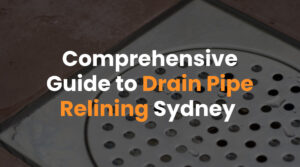Discovering a blocked toilet can be a startling household predicament. Navigating through the methods to unblock a toilet, especially one badly clogged, necessitates a blend of practical know-how and precaution. From the traditional plunger approach to the innovative hot water trick, our guide ensures you comprehend varied tactics to restore a smooth flow through your toilet drain, providing a path from recognising the blockage to successfully addressing it, without causing a regrettable toilet overflow.
Recognising the Signs of a Blocked Toilet
Identifying a blocked toilet is pivotal in forestalling a potential mess and hygiene issues in your bathroom. Be attuned to these signals to promptly tackle the clog:
- Water Rising to the Top: A clear indication is when water perilously rises to the top of the toilet bowl upon flushing.
- Gurgling Sounds: Pay attention to unusual gurgling or bubbling noises coming from the drain, which can indicate a blockage.
- Water Backflow: Check for water backing up into nearby fixtures like the bathroom sink when the toilet is flushed, as this is a telltale sign of a clogged drain.
- Bubbles: Visible bubbles rising when flushing the toilet can hint at air being trapped by a blockage.
- Slow Draining: A noticeably slow drain or water lingering in the toilet bowl suggests a partial blockage.
- Unpleasant Odours: Unusual or foul smells emanating from the toilet may also indicate a blockage in your toilet or sewer line.
Early detection of these signs is crucial, allowing you to address the issue through DIY methods or by promptly calling in professional help, thereby preventing a minor issue from escalating into a significant, unsanitary problem.
Common Causes of a Blocked Toilets
A clogged toilet, an unpleasant hurdle in our day-to-day lives, can originate from various sources:
- Too Much Toilet Paper: Excessive use of toilet paper can clog pipes, inhibiting the water from flowing freely through the toilet drain.
- Non-Flushable Items: Items like wipes, sanitary products, and diapers should not be flushed as they can swiftly create a bothersome toilet blockage.
- Toilet Brush Accidents: Occasionally, a toilet brush or other cleaning tools may accidentally fall into the bowl, leading to obstructed toilet water flow.
- Pipe Issues: A clogged pipe, often attributed to a buildup of grease, hair, or other debris, is a typical cause of recurring toilet clogs.
- Hard Water Deposits: In some areas, hard water deposits accumulate in the pipe, progressively narrowing the pathway and eventually causing a blockage.
Recognising these causes is a solid first step, enabling you to make informed decisions when attempting to unblock your toilet, whether employing a plunger, a homemade drain cleaner, or a professional plumber.
Immediate Steps to Take When Facing a Blocked Toilet Drain
A blocked drain in the toilet demands immediate attention. Here’s a step-by-step guide to manage the situation while keeping hygiene in check:
- Stop Flushing: If it’s evident that your toilet is blocked, avoid flushing repeatedly to prevent an overflow.
- Prepare the Area: Lay down newspapers or towels around the toilet to manage possible spillage of toilet water. Donning rubber gloves is also crucial to maintain hygiene.
- Employ a Plunger: If you have a toilet plunger, place it over the bottom of the toilet bowl and push down gently, then pull up sharply to dislodge the blockage. Repeating several times may be necessary.
- Homemade Drain Cleaner: In the absence of a plunger, pour a cup of baking soda and 2 cups of vinegar into the toilet bowl. Allow it to fizz and work for several minutes.
- Hot Water Method: Carefully pour hot water into the toilet from a height to exert pressure on the blockage. Ensure the water is not boiling to prevent damaging the porcelain.
- Wire Coat Hanger: Unwind a wire coat hanger, insert it into the toilet drain, and wiggle gently to disrupt the blockage. However, be cautious to avoid scratching the toilet bowl.
- Inspect the Toilet Tank: Sometimes, issues with the toilet tank mechanism might hinder effective flushing. Ensure the flapper is lifting completely and the chain is of appropriate length.
- Seek Professional Help: If the toilet remains blocked after trying all DIY methods, it’s advisable to contact a professional plumber to ensure that the blockage is removed without causing further damage.
Plunger Techniques to Unblock Your Toilet
Using a toilet plunger might be the most traditional and common method to handle a clogged toilet. Engage the rubber gloves, ensure the plunger is submerged in the toilet water, and create a firm seal over the bottom of the toilet. Push down gently, then pull upwards with more force to shift the blockage back and forth, possibly dislodging it. After several attempts, flush the toilet to see if you’ve succeeded.
How to Unclog the Toilet without Using a Plunger
When you’re confronted with a blocked drain and don’t have a plunger on hand, alternative methods to unblock your toilet come into play:
- Baking Soda and Vinegar: Pour one cup of baking soda followed by two cups of vinegar into the toilet bowl, creating a fizzing chemical reaction that can help dissolve minor blockages.
- Hot Water and Dish Soap: Add a few squirts of dish soap into the toilet bowl followed by a bucket of hot (but not boiling) water. Pour the water from a reasonable height to add pressure to dislodge the clog.
- Wire Coat Hanger: Manipulate a wire coat hanger into a straightened shape and cautiously navigate it into the toilet drain, gently moving it to shift the blockage without damaging the pipes.
Utilising Hot Water and Dish Soap Method
Sometimes, hot water and a bit of dish soap can be a surprisingly effective way to unclog a toilet. The soap assists in lubricating the pipe, while the hot water applies pressure to the blockage. Simply squirt some dish soap into the toilet bowl, followed by pouring hot water into the toilet from waist height to exert added pressure on the clog.
Drain Snake Tactics for Toilet Drains
A toilet snake, or plumbing snake, is a reliable tool when confronting a badly clogged toilet. Insert the toilet snake into the drain, twisting and manoeuvring it to break up the blockage or hook onto debris to pull it out. Ensure to use rubber gloves to maintain hygiene and carefully retract the snake to avoid splashes or mess.
A Safe Way to Use Chemical Drain Cleaners
Chemical drain cleaners can be potent and should be employed with caution. Always read the label and follow directions meticulously, ensuring you wear protective gear like rubber gloves and goggles. Pour the recommended amount of chemical drain cleaner into the toilet bowl and allow it to work for the specified time. Flush the toilet to see if the blockage has been dissolved.
Baking Soda and Vinegar: A Potent Combo to Unblock a Toilet
When you’re dealing with a clogged toilet and seeking an easy and non-hazardous way to unclog your toilet, employing a homemade drain cleaner like a baking soda and vinegar solution might be your go-to. Here’s a simple step-by-step to harnessing this potent combo:
- Assess the Situation: Check the toilet to see the water level and ensure there isn’t an overflow when you add more liquid.
- Preparation: Wear rubber gloves for hygiene and have a bucket or cup ready.
- Apply Baking Soda: Sprinkle one cup of baking soda into the toilet bowl, ensuring it disperses evenly.
- Add Vinegar: Gently pour two cups of vinegar into the toilet, aiming to cover the baking soda.
- Wait and Observe: Allow the fizzy reaction between the baking soda and vinegar to work on breaking down the blockage in your toilet.
- Flush Check: After waiting for at least an hour or ideally overnight, flush the toilet to see if the blockage has been dislodged.
- Hot Water Assistance: If the clog persists, consider pouring hot water into the toilet to augment the dissolving process.
Navigating through Persistent Blocked Toilet Drains
Dealing with persistent blocked toilet drains, especially when you don’t have a plunger, might appear daunting. However, with the right tips and tricks, you can manage the situation:
- Boiling Water Method: Carefully pour hot water into the toilet from waist height, aiming to dislodge the blockage with thermal and physical pressure.
- Coat Hanger Method: Unwind a wire coat hanger, cover one end with a cloth (secure it with a rubber band), and gently navigate it down the toilet drain to potentially shift or break up the clog.
- Plumbing Snake/Toilet Auger: If the blockage is farther down the drain, insert a plumbing snake or toilet snake into the toilet drain, turning it to break through stubborn clogs or retrieve blockage elements.
- Wet/Dry Vacuum: A wet and dry vacuum can be set to the wet mode, creating a seal around the drain, and attempt to suck out the blocking material.
- Dish Soap and Water: Injecting some lubrication via dish soap, followed by a bucket of water (poured from height), might ease the clog away.
- Checking Toilet Tank: Ensure the toilet tank is functioning and refilling appropriately after flushes to provide adequate water to assist in natural clog resolution.
When the toilet clogs persist despite trying multiple methods to unblock a toilet drain, it’s prudent to enlist the help of professional plumbing services. Consistent or recurrent blockages might indicate a deeper, underlying issue that needs expert attention and repair.
Addressing Repeated Clogs in Your Toilet Drain
A consistently clogged toilet can be more than just a temporary inconvenience; it can signal underlying issues within your plumbing system that demand attention. Tackling repeated toilet clogs necessitates a blend of immediate action, investigation, and long-term solutions:
- Quick Unblock: Initially, utilise familiar methods like using a toilet plunger, hot water, or a combination of baking soda and vinegar to manage the immediate blockage.
- Documenting Incidences: Keep a record of how often and under what circumstances the toilet tends to clog, as it might provide insights into potential causes or patterns.
- Expert Consultation: For ongoing issues, engaging a professional plumber to inspect the toilet drain and adjacent piping can unveil hidden obstructions or structural issues.
Investigating the Underlying Causes of Blocked Toilets
Investigation into the causes of consistent blockages might reveal issues such as:
- Foreign Objects: Persistent clogs might result from non-degradable items being flushed down.
- Pipe Issues: This could involve broken, misaligned, or corroded pipes that impede smooth flow.
- Tree Roots: Invasive roots can obstruct and damage pipes, leading to consistent issues.
- Low Flow Toilets: Older, low-flow toilets might lack the necessary pressure to clear the bowl effectively.
An expert can use tools like a plumbing snake or camera to visually inspect the pipes and identify the exact problem location and nature.
Permanent Solutions to Prevent Future Clogs
Addressing the root causes of persistent clogs in your toilet drain can offer a path towards permanent solutions:
- Pipe Repair or Replacement: In instances where the plumbing is compromised, a repair or replacement might be required.
- Upgrading Toilet: Sometimes, replacing an older toilet model with a more efficient one that has stronger flushing capabilities can alleviate recurring issues.
- Utilising Grates: Adding a grate or mesh to catch debris before entering the drain can be a preventative measure.
- Educating Household: Ensuring all members of the household understand what can and cannot be flushed down the toilet is paramount to avoiding future clogs.
- Routine Maintenance: Regularly scheduled professional check-ups of your sewage and drainage system can pre-emptively identify and resolve issues before they become problematic.
Preventive Measures to Keep Your Toilet Drain Flowing Freely
Ensuring a smooth, uninterrupted flow in your toilet drain requires a blend of proactive actions, cautious usage, and regular maintenance:
- Mindful Flushing:
- Only flush bodily waste and toilet paper.
- Avoid flushing wipes, sanitary products, and other non-degradable items.
- Routine Checks:
- Regularly inspect the toilet flush pressure and speed of water drainage.
- Utilise a mild, homemade drain cleaner (like a baking soda and vinegar mixture) periodically to maintain clear pipes.
- Safe Disposal:
- Provide alternative disposal methods, like bins, for items that shouldn’t be flushed.
- Implement drain grates to catch any accidental debris.
- Early Intervention:
- Address slow drains, minor clogs, and unusual sounds immediately to prevent larger blockages.
- Educating House Members:
- Ensure all family members, especially children, understand the guidelines for safe and responsible toilet use.
- Regular Professional Checks:
- Schedule periodic professional check-ups to inspect and maintain the toilet and associated piping.
When to Call a Professional Plumber
Addressing a clogged toilet may sometimes go beyond the capabilities of DIY solutions, necessitating professional intervention:
- Recurring Issues: If blockages and slow drains persist despite your efforts, it’s indicative of a deeper, potentially serious issue.
- Overflowing Toilet: An overflowing toilet is a plumbing emergency that requires immediate professional attention to prevent water damage and maintain sanitation.
- Visible Damage: Noticeable damage to the toilet, pipes, or visible leaks are clear signals to call a plumber.
- Inadequate Pressure: If the toilet isn’t flushing with sufficient pressure, or if it doesn’t flush at all, expert assistance is necessary.
- Unsuccessful DIY Attempts: If conventional methods like plunging, hot water, and baking soda mixtures are ineffective, a professional will have the tools and expertise to resolve the issue.
Need an Expert to Unblock a Toilet Drain?
Don’t Struggle with a Blocked Toilet – Get Professional Help Now! Contact Plumbwell Plumbing Services at (02) 9064 2861. Our skilled plumbers utilise advanced techniques and tools to efficiently unblock your toilet, ensuring you can get back to your routine with minimal disruption.








